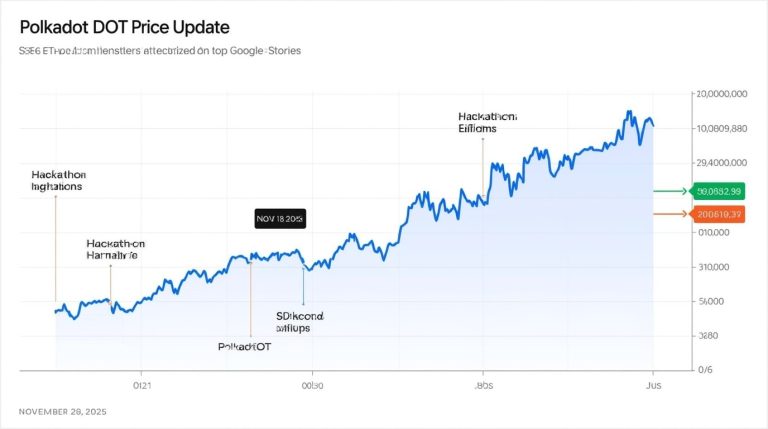Aew Uk Reit (LON: AEWU) shares have fallen below its 50-day moving average in a significant move that shows the UK real estate investors that they may be about to witness volatility in its shares amid economic uncertainties.
On November 28, 2025, the stock was as low as 104.60p, before closing at 106.40p, below the 50-day mark of 106.81p. This action has led to the debate among analysts as to whether this is a buying opportunity or a sign of the impending pressure of the market in the next year.
Aew Uk Reit is a leading competitor in the commercial property market within the United Kingdom that focuses on value-based investments in a wide range of types of property. The trust, which has a market capitalisation of PS168.72 million, has gained enough reputation for investing in mispriced assets in prime locations through active management to provide returns. Nonetheless, this recent price movement highlights the problems of REITs in a post-inflationary world, in which the interest rates and tenancy trends are still being changed.
Learning about the Moving Average Crossover: A Technical Red Flag?
Declining below the 50-day moving average of a stock is usually viewed as a bearish sign by technical analysts and indicates a lack of short-term strength. In the case of AEW UK Reit, the event took place on a day when the trading volume was more than 308,770 shares, which is above the average trading volume, meaning that there was increased investor activity. The 200-day moving average is 105.54p and offers a more farsighted support level, which may be applied in the case of continuing selling pressure.
This crossover comes at a time when the UK property market stands to deal with mixed signals. Whereas other markets, such as logistics and retailing, exhibit resilience, other markets encounter headwinds in the form of remote work trends and rising costs of operations.
The portfolio of Aew Uk Reit, which does not focus on strict sector allocations, sets the company in a position to be flexible, yet the decline of the share price is indicative of general hesitation. The stock has been subject to fluctuations over the last year, with the 52-week low of approximately 90p recorded and the high of approximately 120p indicating the sensitivity of the stock to economic fluctuations.
The financial ratios of the company provide a two-sided image. Aew Uk Reit is underpriced and has a low beta value of 0.61 and price price-earnings ratio of 6.92 as compared to the market average. Its debt-to-equity ratio is moderate at 36.77, with good liquidity ratios of a quick ratio of 6.18 and a current ratio of 4.40. These basics would help to cushion against additional falls, but any indication of stress in portfolios is being monitored by investors.
Dividend Stability Amid Price Volatility
The stable dividend policy of AEW UK REIT is one of its strongest attracting factors. The trust has distributed 8p per share of dividend annually in the first quarter of 2016, which represents a yield of about 7.5% at current prices.
This consistency has gained the attention of income-oriented investors, especially in a low-yielding environment. The latest dividend disbursed on a quarterly basis confirms that the company is determined to reward the shareholders regardless of the market movements.
But the weakness of the share price makes the sustainability questionable. In case of weakening of property prices or a decline in rental revenues, it would be a burden to keep up with this dividend.
Analysts observe that the value investment policy of AEW UK REIT, which aims at improving the value of its assets and opportunistic acquisitions, has been historically seen to support payouts, yet externalities such as changes in the UK taxes or an increase in interest rates would affect payouts in future.
Analyst View and Market Situation
Analysts are unanimous about AEW UK REIT with a Hold rating, with some of them opting to recommend other options within the REIT sector that have greater prospects of growth. The highest rated analysts emphasise the good track record of the trust but warn that it should not be over exposed when the uncertainties arise.
The FTSE 100 is looking to record modest gains on November 28 in the wider market, buoyed by the anticipation of Federal Reserve rate reductions, but the UK-based stocks, such as REITs, are still pegged on the domestic economic fundamentals.
In the case of AEW UK Reit, the future perspective of the company will depend on the growth and inflation levels of the UK economy. Favourable news, including a new office demand or infrastructure development, might boost the shares to a level of critical averages.
On the other hand, the dip may be aggravated by a long period of slowdown, which may put the 200-day support to the test. To determine the occupancy rates and net asset value, investors are encouraged to watch the future earnings reports.
Investor 2025 Strategic Implications
To future investors of Aew Uk Reit, the present price value can be a point of entry by long-term investors, particularly with the good yield. Diversification of portfolio by picking different types of property negates certain risks, but alertness is paramount in an industry that is susceptible to boom and slump. With the UK economy adjusting to the world changes, the nimble strategy of Aew Uk Reit might start bearing fruit, but this might take time, considering the short-term turbulence.
This was a wake-up call to the interaction between technical and underlying strength in REIT investment. The fact that shares are currently trading at a price lower than it is at the 50-day average indicates that the next few weeks will indicate whether this is a blip or whether it is starting a more profound correction.












 Bitcoin
Bitcoin  Ethereum
Ethereum  Tether
Tether  XRP
XRP  USDC
USDC  Solana
Solana  TRON
TRON  Lido Staked Ether
Lido Staked Ether  Cardano
Cardano  Avalanche
Avalanche  Toncoin
Toncoin